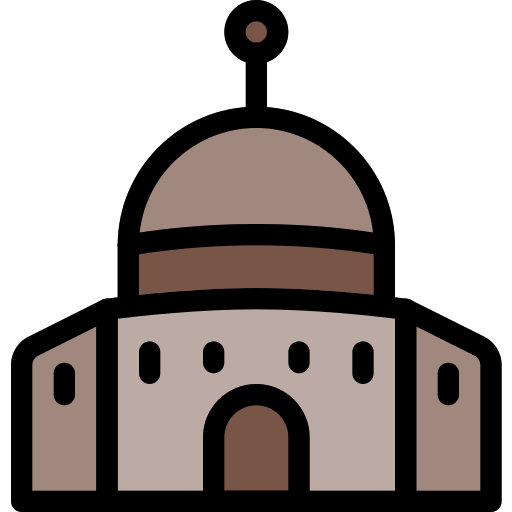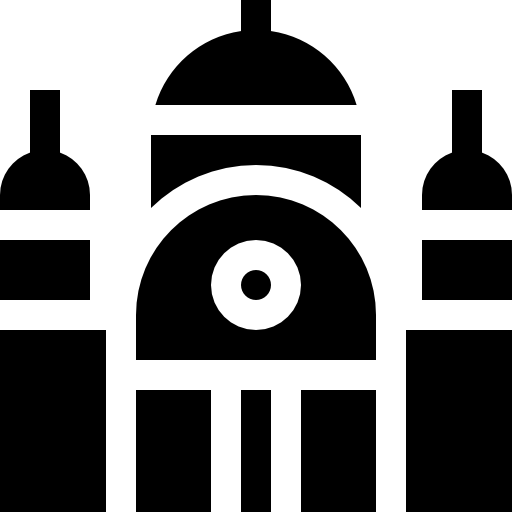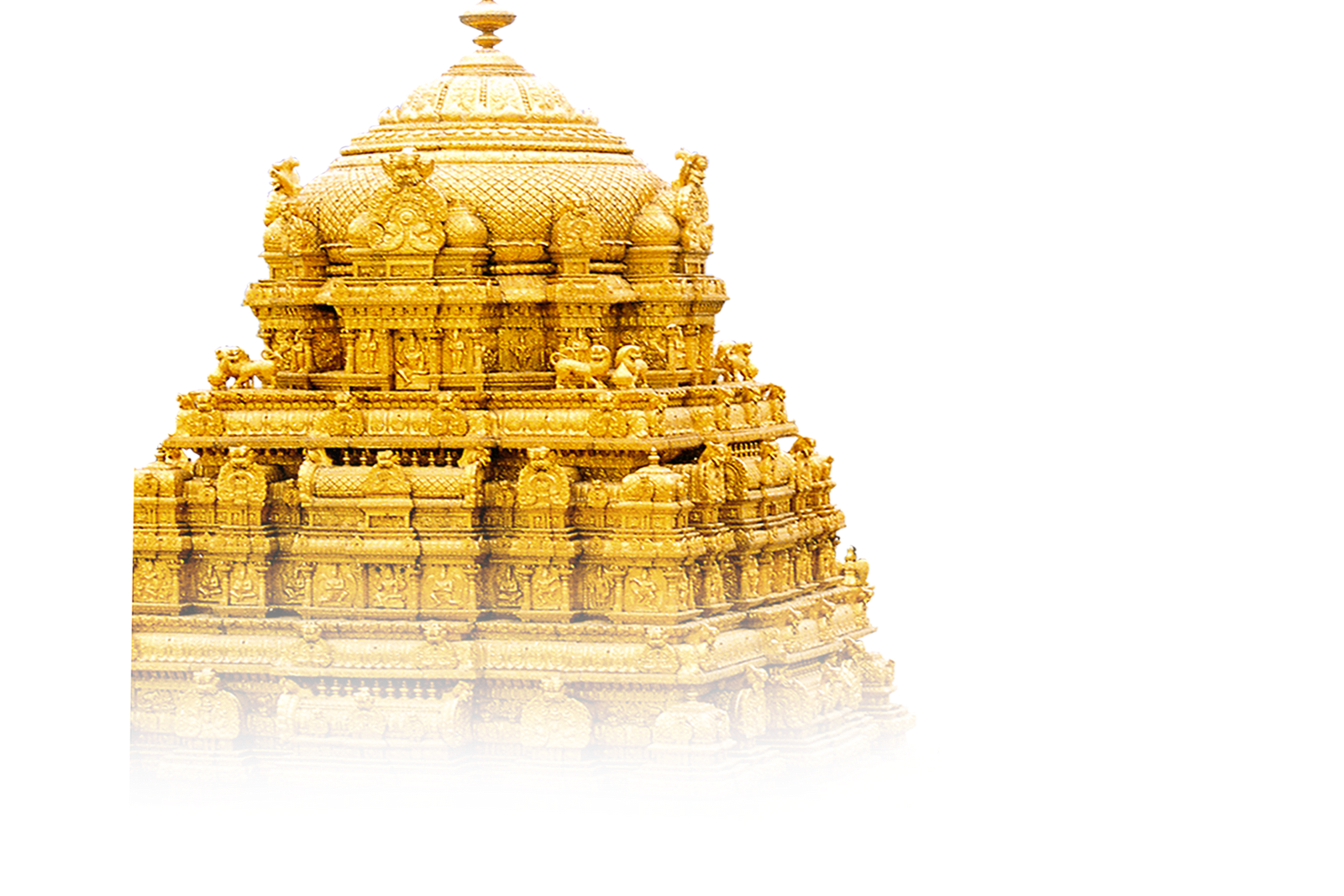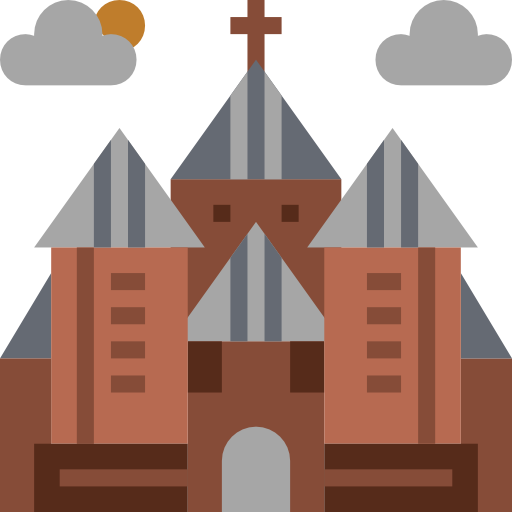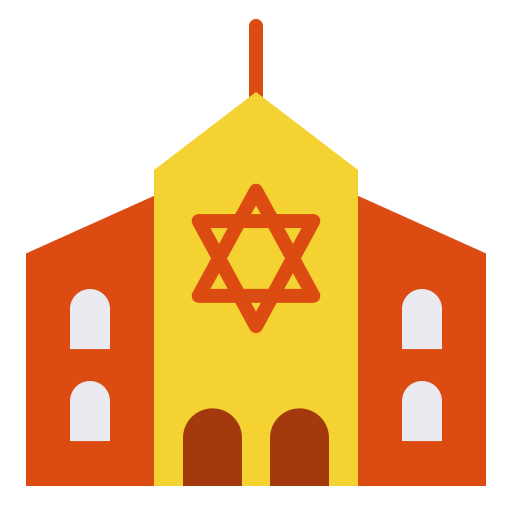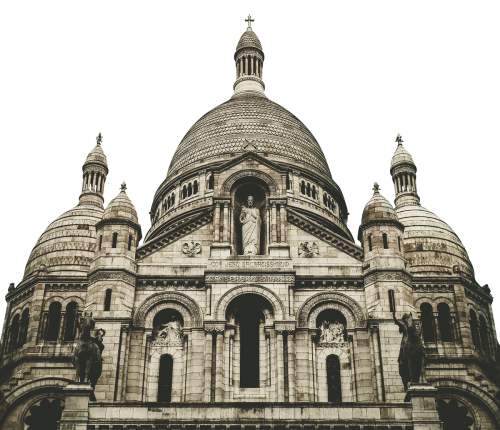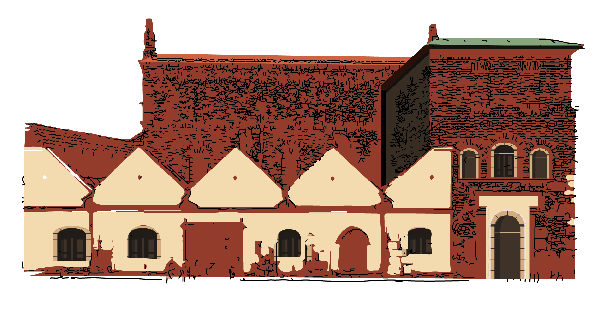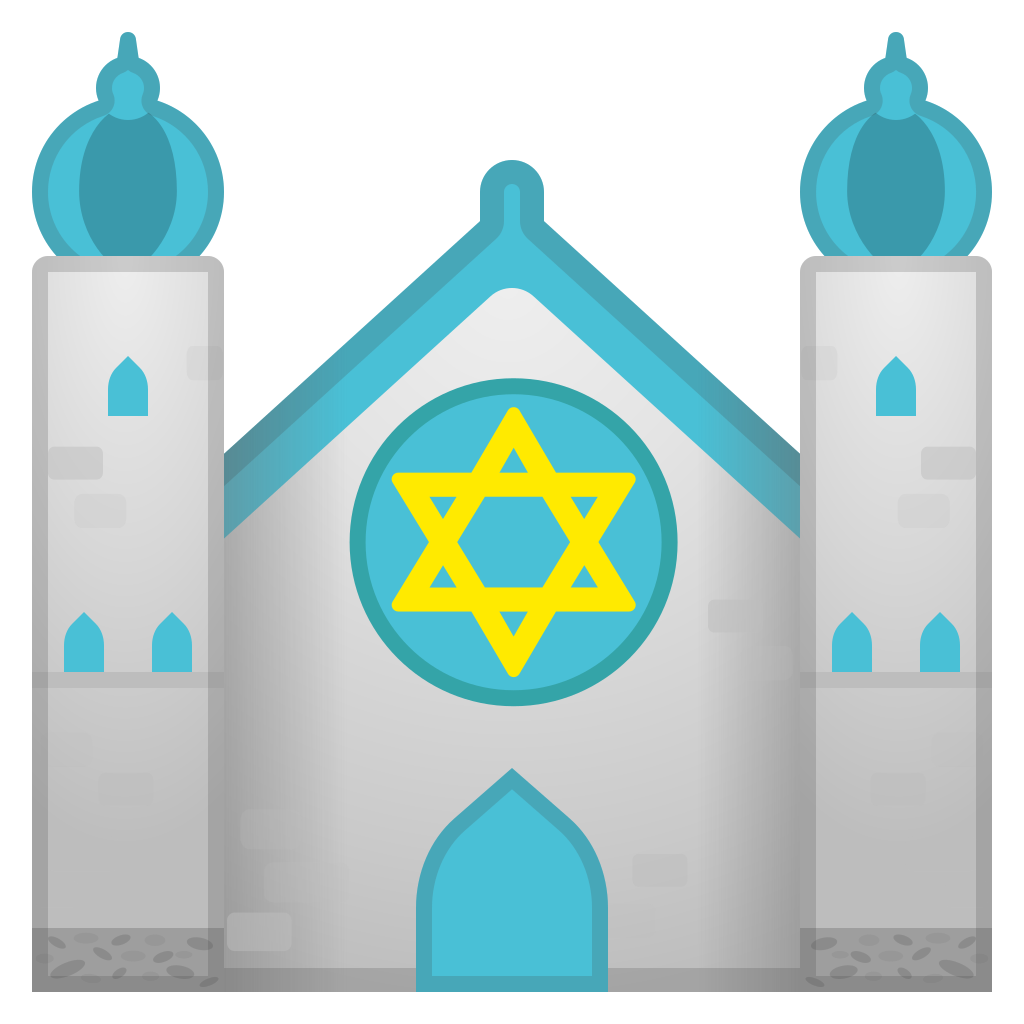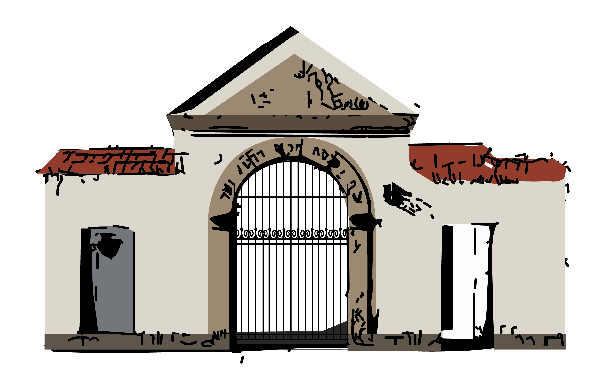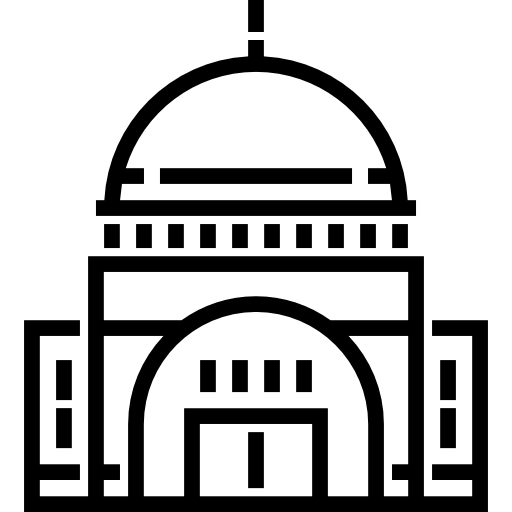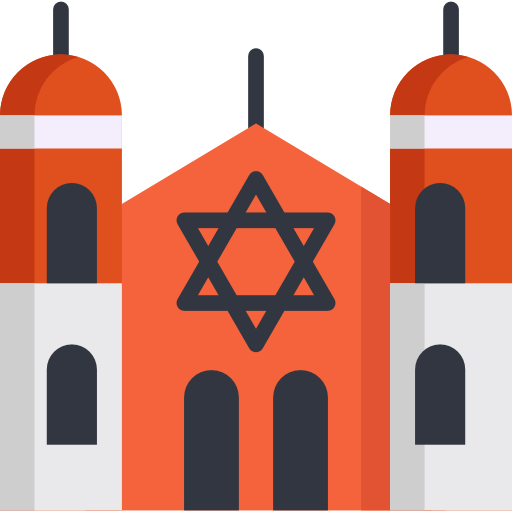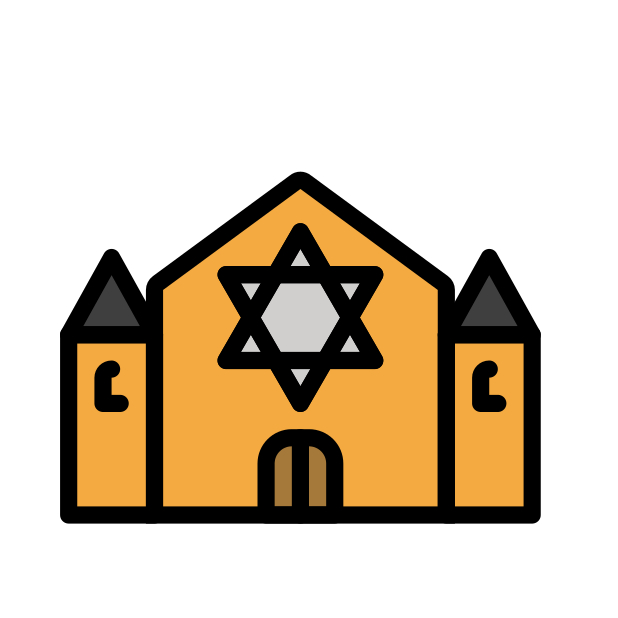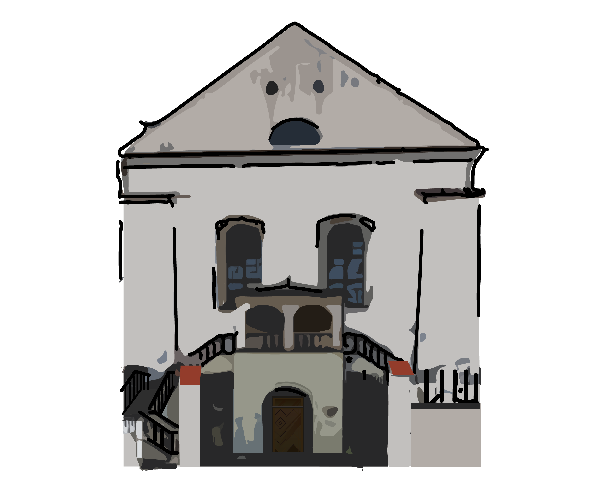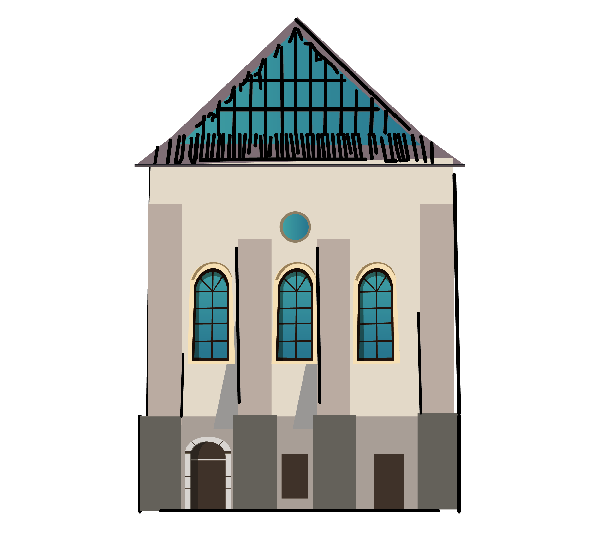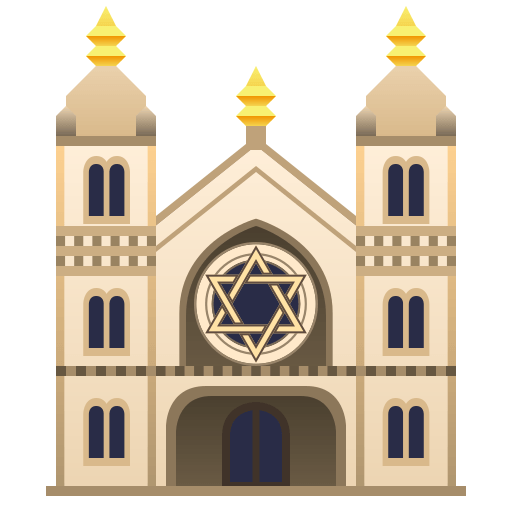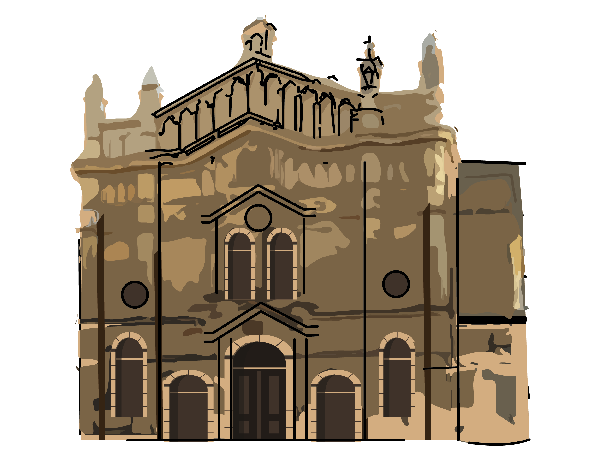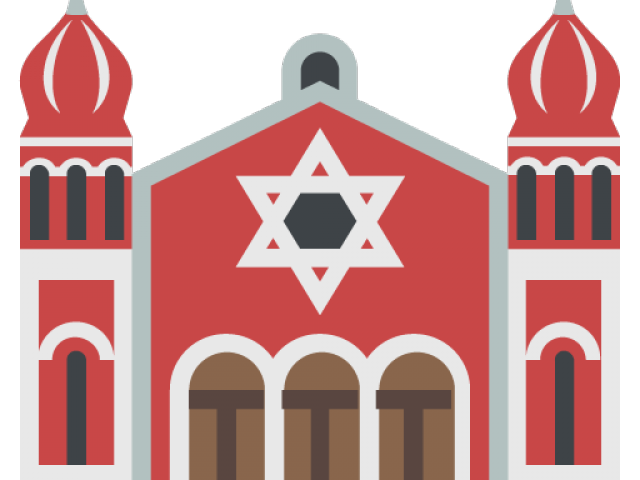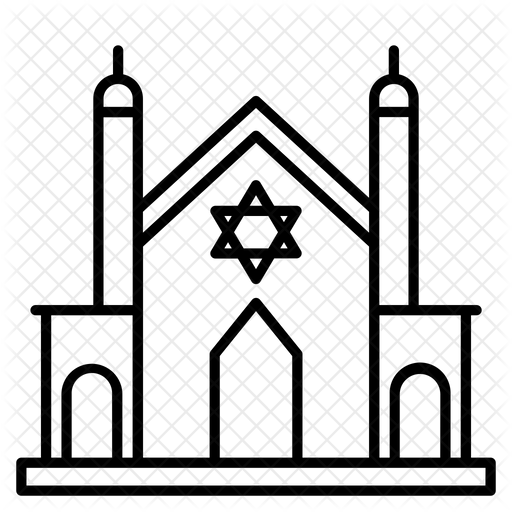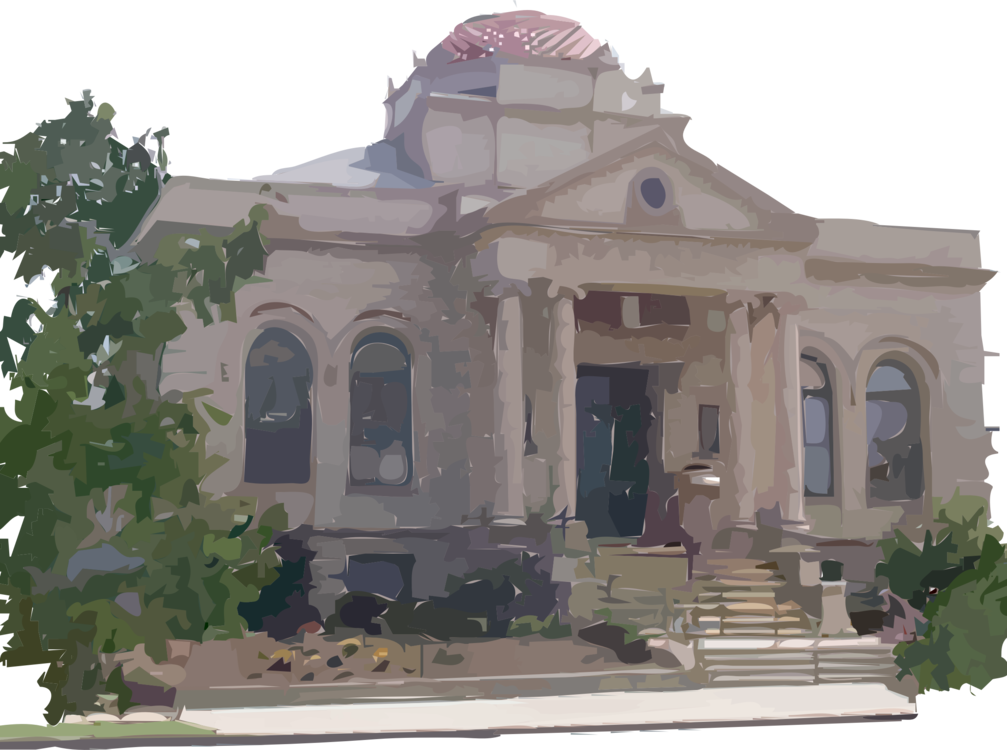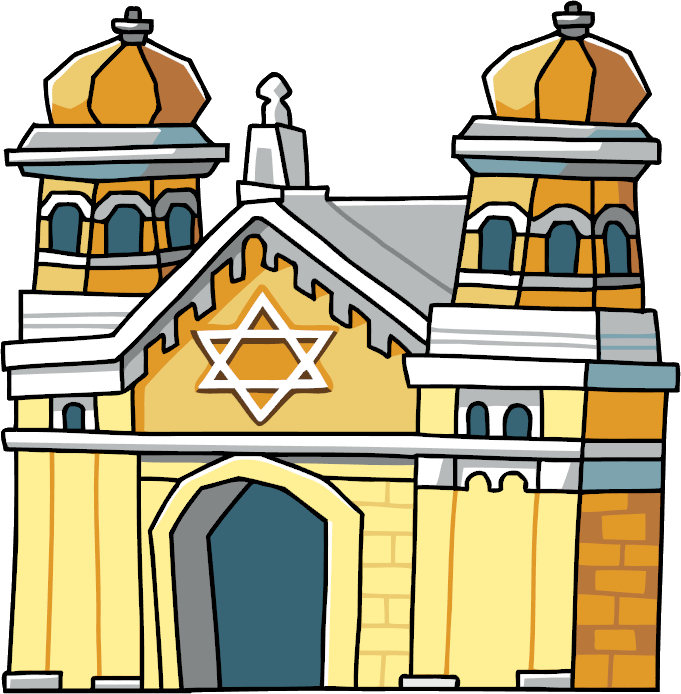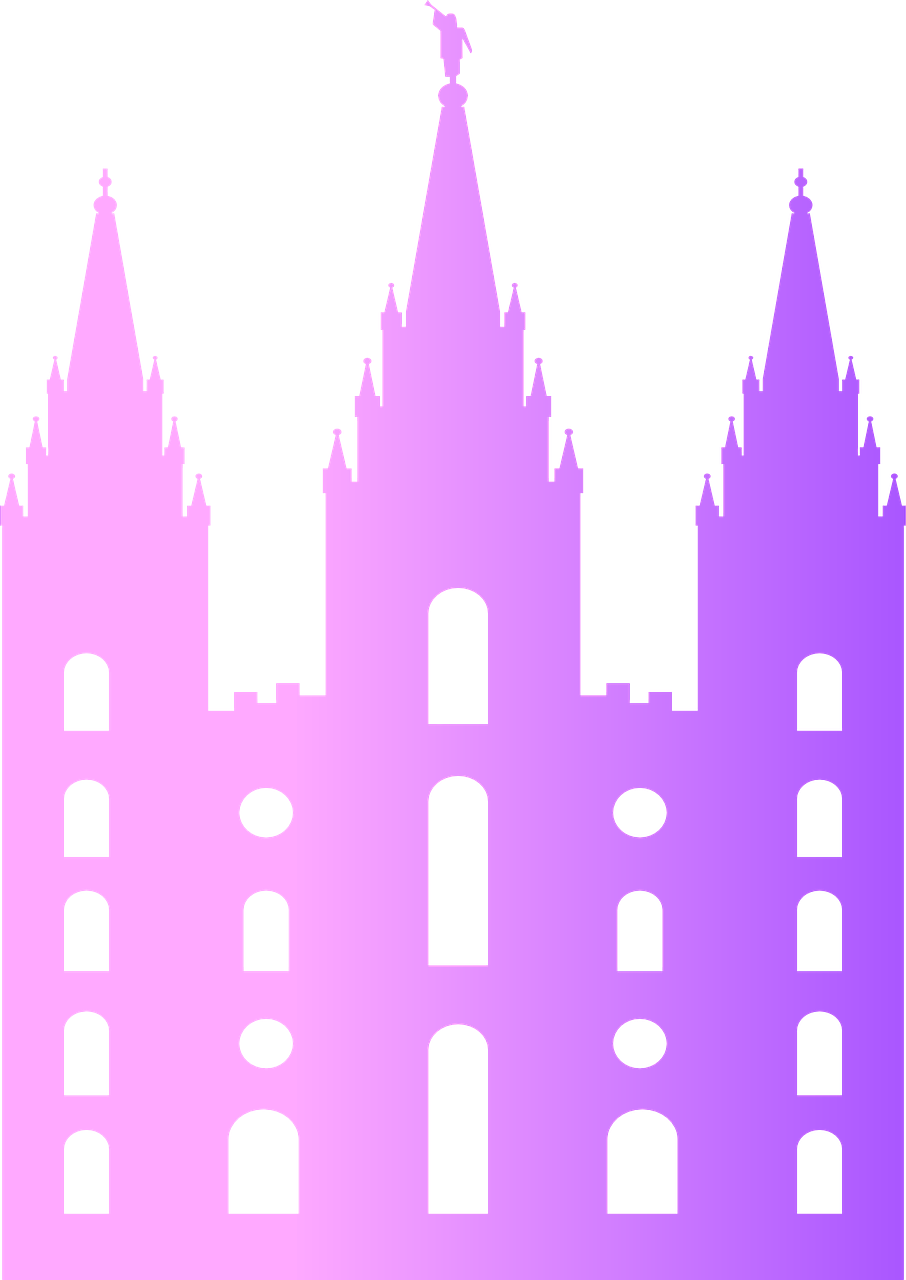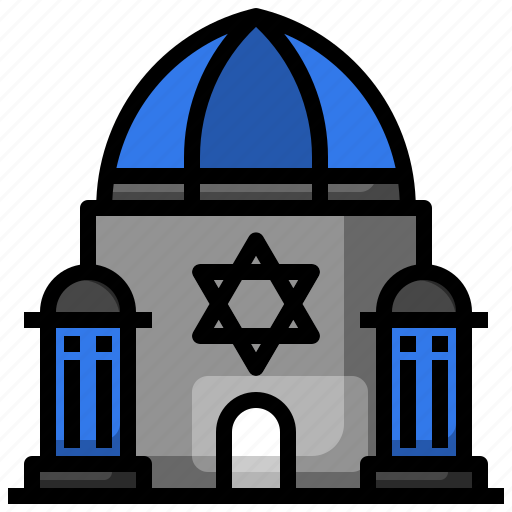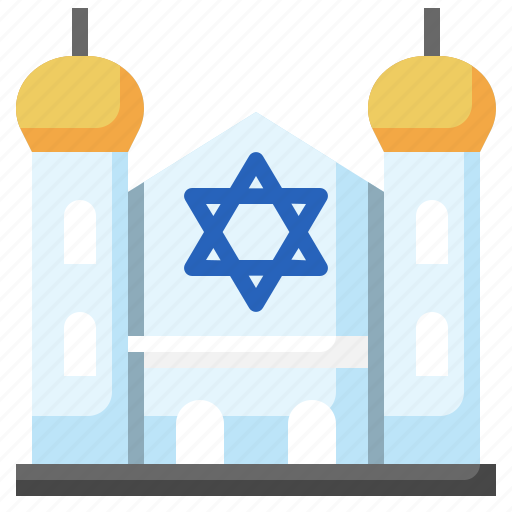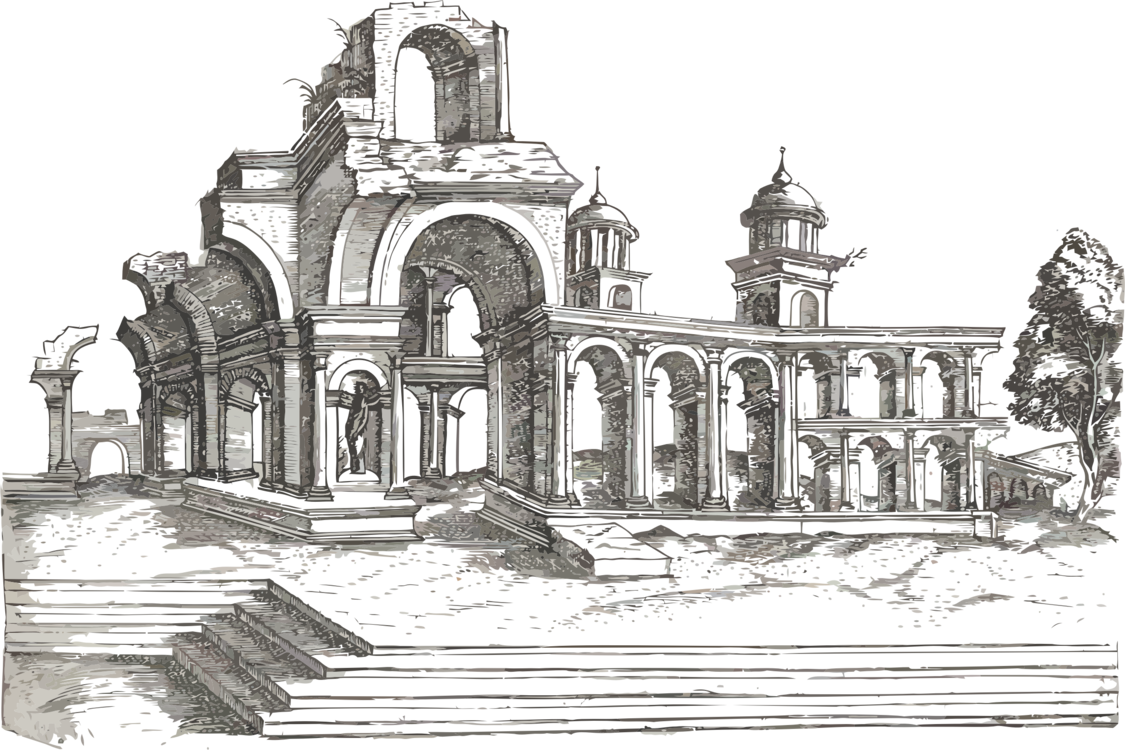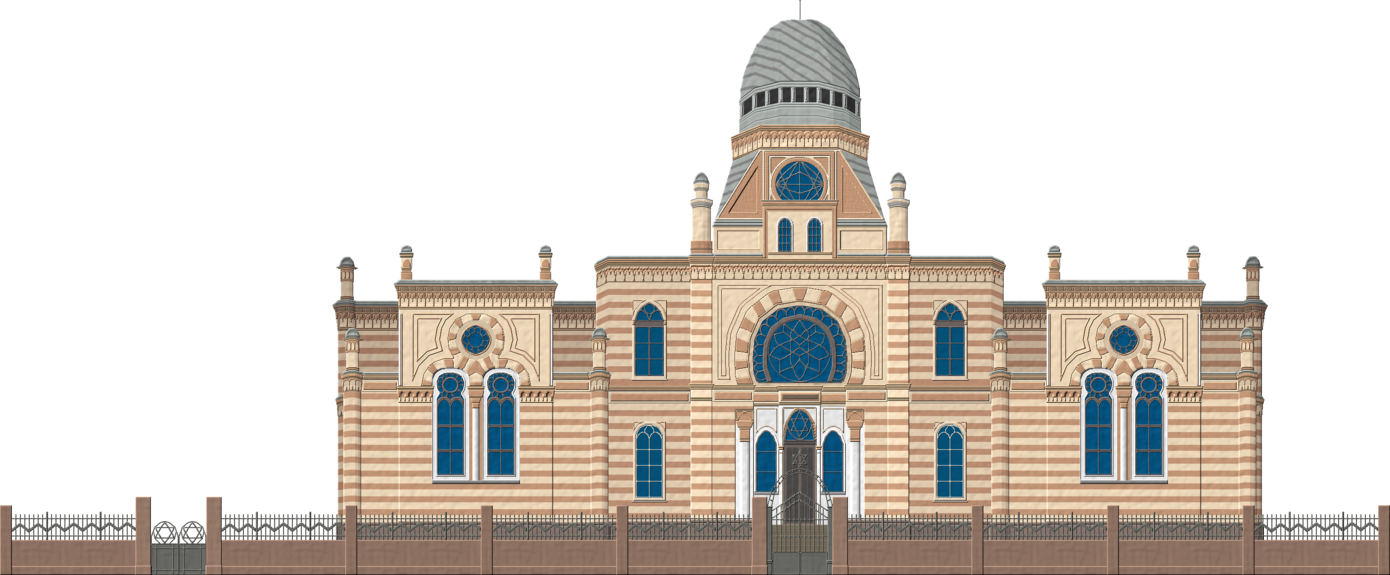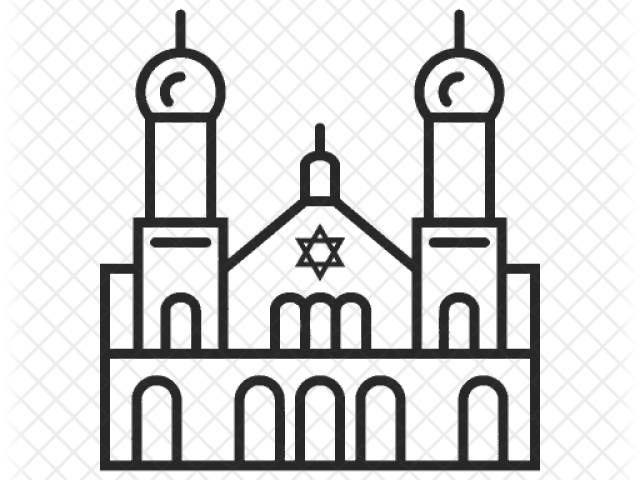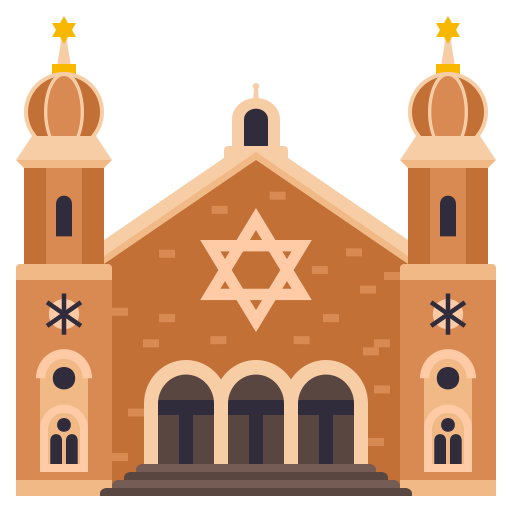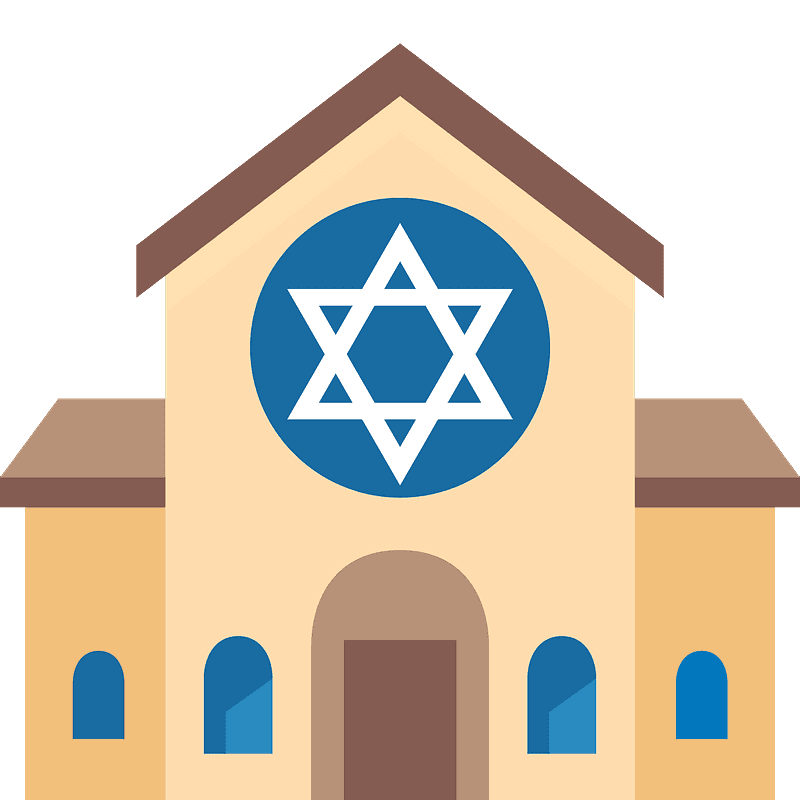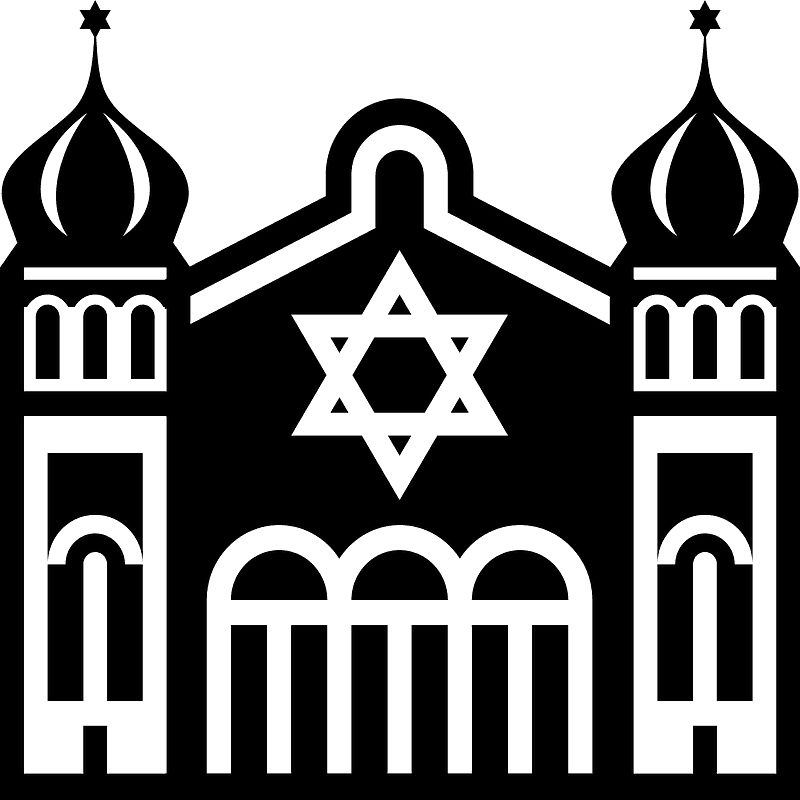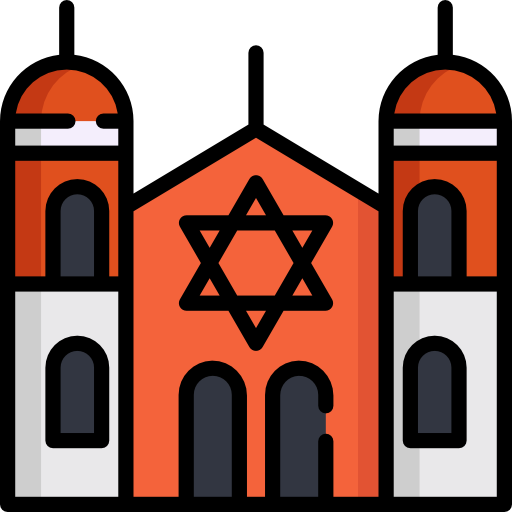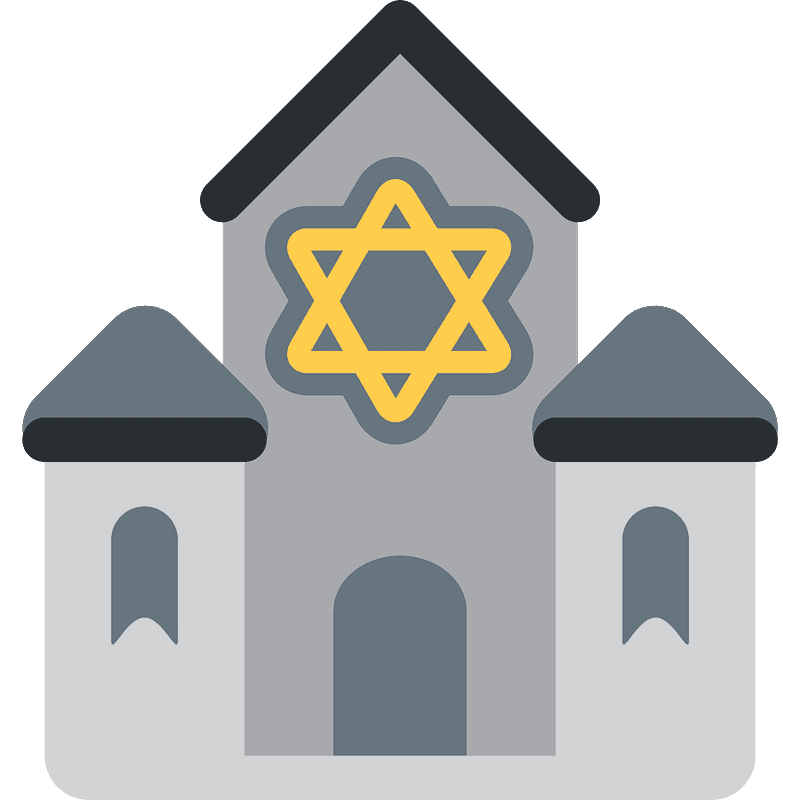Download top and best high-quality free Synagogue PNG Transparent Images backgrounds available in various sizes. To view the full PNG size resolution click on any of the below image thumbnail.
License Info: Creative Commons 4.0 BY-NC
A synagogue is a Jewish or, on rare occasions, a Samaritan place of worship. Synagogues contain a large sanctuary where people can pray, as well as study rooms, a social hall, and offices. Some have a separate area for Torah study known as the beth midrash, which means “house of learning.”
Synagogues are sanctified locations used for prayer, reading of the Tanakh (the complete Hebrew Bible, including the Torah), study, and assembly; however, Jewish worship does not need a synagogue. According to Halakha, community Jewish prayer can take place anywhere 10 Jews (a minyan) gather. Worship can also be performed alone or with a group of less than ten individuals. Certain prayers, however, are considered communal prayers under halakha and may only be chanted by a minyan. The synagogue does not replace the long-since destroyed Temple in Jerusalem in terms of precise ceremonial and liturgical activities.
Although synagogues existed long before the Second Temple was destroyed in 70 CE, communal prayer at the period focused primarily on korbanot (“sacrificial offerings”) made by the kohanim (“priests”) in the Temple in Jerusalem. In reality, the all-day Yom Kippur ceremony was an event in which the crowd both observed and prayed for the kohen gadol’s (“high priest’s”) success while he presented the day’s offerings.
The members of the Great Assembly (about 5th century BCE), according to Jewish tradition, structured and standardized the language of Jewish prayers. Prior to then, individuals prayed as they saw fit, with each person praying in his or her own unique style, and there were no set prayers to say.
One of the leaders towards the end of the Second Temple period, Johanan ben Zakai, promoted the concept of establishing independent temples of worship wherever Jews found themselves. According to many historians, this contributed to the Jewish people’s continuity by preserving a distinct identity and a portable mode of worship despite the destruction of the Temple.
Synagogues, in the sense of purpose-made worship halls or chambers previously designed for another use but now devoted for formal, community prayer, existed even before the Second Temple was destroyed. The oldest archaeological evidence for the existence of very early synagogues comes from Egypt, where stone synagogue dedication inscriptions from the 3rd century BCE demonstrate that synagogues existed at that time. Archaeologists in Israel and other Hellenistic nations have discovered more than a dozen Jewish (and perhaps Samaritan) synagogues from the Second Temple period.
A synagogue can be built by any Jew or group of Jews. Synagogues have been built by ancient Jewish kings, wealthy patrons, as part of a wide range of human institutions such as secular educational institutions, governments, and hotels, by the entire community of Jews living in a particular location, or by sub-groups of Jews arrayed according to occupation, ethnicity (i.e. the Sephardic, Polish, or Persian Jews of a town), style of religious observance (i.e. a Reform or Orthodox synagogue), or by
Download Synagogue PNG images transparent gallery
- Synagogue Ancient PNG Cutout
Resolution: 512 × 512
Size: 20 KB
Image Format: .png
Download
- Synagogue Ancient PNG Images
Resolution: 512 × 512
Size: 10 KB
Image Format: .png
Download
- Synagogue Ancient PNG Photos
Resolution: 1600 × 1067
Size: 1494 KB
Image Format: .png
Download
- Synagogue Ancient Transparent
Resolution: 512 × 512
Size: 15 KB
Image Format: .png
Download
- Synagogue Ancient PNG Clipart
Resolution: 512 × 512
Size: 12 KB
Image Format: .png
Download
- Synagogue Ancient PNG Picture
Resolution: 512 × 512
Size: 13 KB
Image Format: .png
Download
- Synagogue Ancient PNG HD Image
Resolution: 512 × 512
Size: 8 KB
Image Format: .png
Download
- Synagogue Ancient PNG Image HD
Resolution: 500 × 430
Size: 323 KB
Image Format: .png
Download
- Synagogue Old PNG Pic
Resolution: 512 × 512
Size: 18 KB
Image Format: .png
Download
- Synagogue Old PNG File
Resolution: 600 × 314
Size: 58 KB
Image Format: .png
Download
- Synagogue Old PNG Image
Resolution: 512 × 512
Size: 10 KB
Image Format: .png
Download
- Synagogue Old PNG Photo
Resolution: 1024 × 1024
Size: 108 KB
Image Format: .png
Download
- Synagogue Old PNG Cutout
Resolution: 512 × 512
Size: 29 KB
Image Format: .png
Download
- Synagogue Old PNG Images
Resolution: 600 × 380
Size: 26 KB
Image Format: .png
Download
- Synagogue Old PNG Photos
Resolution: 512 × 512
Size: 7 KB
Image Format: .png
Download
- Synagogue Old Transparent
Resolution: 597 × 481
Size: 10 KB
Image Format: .png
Download
- Synagogue Old PNG Clipart
Resolution: 512 × 512
Size: 17 KB
Image Format: .png
Download
- Synagogue
Resolution: 618 × 618
Size: 8 KB
Image Format: .png
Download
- Synagogue PNG
Resolution: 600 × 492
Size: 36 KB
Image Format: .png
Download
- Synagogue PNG Pic
Resolution: 600 × 536
Size: 23 KB
Image Format: .png
Download
- Synagogue PNG File
Resolution: 512 × 512
Size: 14 KB
Image Format: .png
Download
- Synagogue PNG Image
Resolution: 512 × 512
Size: 17 KB
Image Format: .png
Download
- Synagogue PNG Photo
Resolution: 600 × 466
Size: 53 KB
Image Format: .png
Download
- Synagogue PNG Cutout
Resolution: 640 × 480
Size: 62 KB
Image Format: .png
Download
- Synagogue PNG Images
Resolution: 512 × 512
Size: 87 KB
Image Format: .png
Download
- Synagogue PNG Photos
Resolution: 1007 × 750
Size: 372 KB
Image Format: .png
Download
- Synagogue Transparent
Resolution: 681 × 694
Size: 52 KB
Image Format: .png
Download
- Synagogue PNG Clipart
Resolution: 1000 × 224
Size: 24 KB
Image Format: .png
Download
- Synagogue PNG Picture
Resolution: 906 × 1280
Size: 80 KB
Image Format: .png
Download
- Synagogue PNG HD Image
Resolution: 512 × 512
Size: 27 KB
Image Format: .png
Download
- Synagogue PNG Image HD
Resolution: 500 × 500
Size: 9 KB
Image Format: .png
Download
- Synagogue No Background
Resolution: 512 × 512
Size: 23 KB
Image Format: .png
Download
- Synagogue PNG Images HD
Resolution: 512 × 512
Size: 20 KB
Image Format: .png
Download
- Synagogue PNG Free Image
Resolution: 1125 × 750
Size: 1011 KB
Image Format: .png
Download
- Synagogue PNG Image File
Resolution: 512 × 512
Size: 18 KB
Image Format: .png
Download
- Synagogue Background PNG
Resolution: 1390 × 575
Size: 515 KB
Image Format: .png
Download
- Synagogue Old
Resolution: 640 × 480
Size: 204 KB
Image Format: .png
Download
- Synagogue Old PNG
Resolution: 1345 × 750
Size: 428 KB
Image Format: .png
Download
- Synagogue Ancient
Resolution: 2287 × 2271
Size: 1077 KB
Image Format: .png
Download
- Synagogue Ancient PNG
Resolution: 512 × 512
Size: 22 KB
Image Format: .png
Download
- Synagogue Ancient PNG Pic
Resolution: 800 × 800
Size: 13 KB
Image Format: .png
Download
- Synagogue Ancient PNG File
Resolution: 800 × 800
Size: 13 KB
Image Format: .png
Download
- Synagogue Ancient PNG Image
Resolution: 512 × 512
Size: 26 KB
Image Format: .png
Download
- Synagogue Ancient PNG Photo
Resolution: 800 × 800
Size: 9 KB
Image Format: .png
Download
